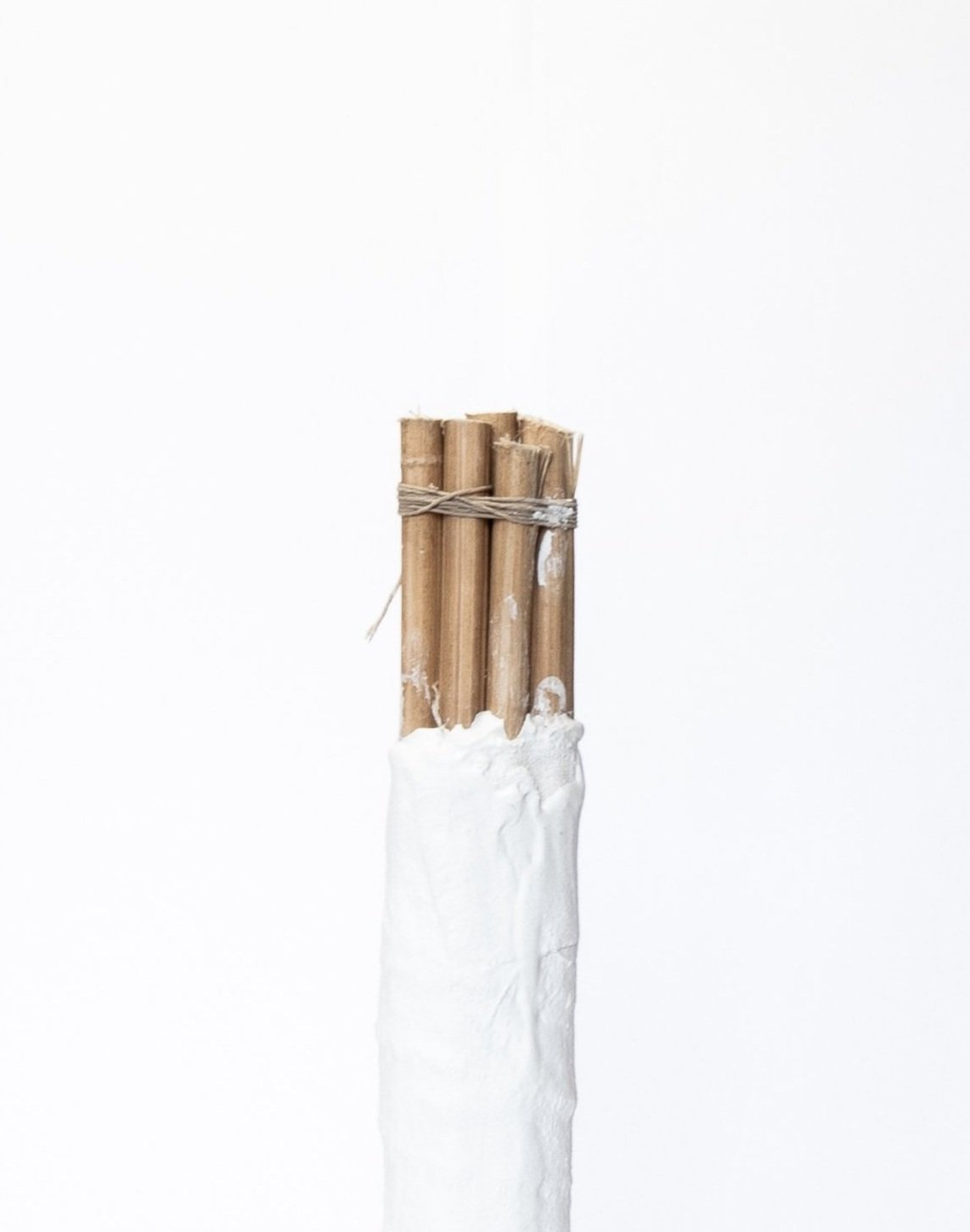It might be a major challenge for this product to compete with timber in mainstream construction until robust independent testing and formalised specifications have been approved with processes that give product assurance and consistency of performance.
Structural Form
Although initial prototyping will explore the product’s use as a substitute material to timber in standard frame construction, the nature of the raw material (hemp stalk) will allow new and innovative forms of construction. The plant’s flexibility will allow curved forms and the potential to create large meshes of structural elements on to which hemp lime can be sprayed.
Hemp Stalk
The hemp stalk is sourced from a farm in Essex, UK. It was harvested after the seed crop had been extracted. Early prototypes have focused on the bottom 500mm of stalk (total length between 2000-2500mm) but the intention is that the whole length will be utilised in the final product. By staggering the stalks, elements of greater lengths could be produced.
Fibre
The product benefits from the fibre within the hemp stalk as well as a reinforcing wrap of processed/refined fibre around the stalks. The wrapping fibre layer can be the loose raw material or a woven mesh. Many hemp fabrics are available on the market and are easier to work with while producing the elements yet they are usually at a premium compared to the loose fibre.
Binder
The binding agent used in early prototypes has been a range of resins











